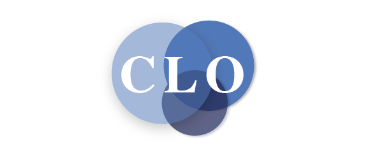High performing companies find that creating a talent mobility strategy, always a boon for retention, has ancillary learning benefits that promote internal leadership development as well.
One of the biggest challenges associated with mentoring programs is keeping executives and employees invested. People may be excited about participating initially, but excessive paperwork, lack of marketing and unclear expectations can cause excitement to wane and programs to languish.
Cardinal Health is no exception. The Fortune 500 health care services company headquartered in Dublin, Ohio, has 37,000 employees, and many formal and informal mentoring programs, but they never thrived, said Susan Moss, senior consultant for talent management in the leadership development group. When she was hired in 2013, one of her first mandates was to breathe new life into the mentoring culture.
Moss wanted a formal program to enable employees to connect across different departments and geographies. That’s one of the key benefits of formal versus informal mentoring programs, she said. “Informal mentoring is based on your network and who you already know. We wanted a program that helped people build new networks.”
Five Minutes and You’re In
The company already had a web-based mentoring software system, but Moss said it was cumbersome and too complicated. So she replaced it with MentorcliQ, a cloud-based mentoring system that uses algorithms to match mentors and mentees, and provides tools to track and manage those relationships. Moss said she liked the ease-of-use of the system, and the fact that employees could enroll in the program in a matter of minutes via their computer or mobile device.
But good software is only the first step to make a mentoring program work. To drive program awareness and drum up interest in participating, Moss customized the program to be minimally invasive. Once mentors and mentees are connected, they set their own agendas using the system to schedule meetings and send alerts. She also set a timeline of six months for mentoring relationships, with the option to renew for another six months. She said the predefined timeline made the program more intentional and gave participants a sense of what they are committing to. “They know how long they will be in the relationship and they know what is expected of them in that time.”
To ensure relationships play out as intended, mentors and mentees are asked to complete a short monthly survey via email about whether they are meeting as planned and achieving pre-established goals. Along with setting goals and periodic check-ins, the system asks participants to provide a wrap-up at the end of six months summarizing whether they met their goals and whether they want to renew. “We wanted to provide enough structure so that people have the support and tools they need to be successful, then get out of their way,” Moss explained.
Once the system was in place in 2014, the team set up a pilot program inviting potential mentors and mentees to participate based on suggestions from the HR team. Early pairings went well, so Moss’ team began marketing and promoting the program through a variety of channels, including posters and cafeteria table tents, articles on the website, mentor spotlight stories in company newsletters, and presentations at company meetings. Most participation comes from word of mouth, she said. “People love it and they talk about it, so the growth has been phenomenal.”
You’ve Got a Match
The criteria for mentors is they have to have been with Cardinal for at least a year, and agree that if they are chosen they will participate. They do not need to be at a senior level in the organization, and Moss noted there are several mentoring relationships in which younger staff and individual contributors mentor senior leaders.
To sign up, mentors complete a short training course about mentoring and how to use the MentorcliQ program, then they fill out a profile highlighting their areas of expertise and what they think they have to offer a mentee. They also complete a Big Five personality profile that measures their level of extraversion, agreeableness, conscientiousness, emotional stability and openness to experience.
Mentees also fill out a profile about themselves and what they are looking for in a mentor. Some come in with a specific mentor in mind, others search the database for options, and others rely on the system’s algorithm to provide a list of potential matches based on profile compatibility. The process is often compared to a dating site, and that was intentional, said Andrew George, co-founder of MentorcliQ in Columbus, Ohio. “These are relationships, and it is important to have a sophisticated way to make the right connections so they have a high likelihood of success,” he said.
Karen Gleason, manager of specialty markets and programs for Cardinal in La Vergne, Tennessee, joined MentorcliQ in 2015 after reading about it in the company newsletter. Gleason had been looking for someone to help her with professional development, and her manager encouraged her to sign up. A few days later she got a list of potential mentors.
Each list of matches includes mentors’ bios, mentoring objectives and a percentage score showing how well they matched the mentee’s criteria. Gleason chose the second candidate on her list: Dusty Muck, a senior consultant in the ambulatory care division in the headquarters office. He was at the same level in the organization as Gleason, but in a different department. They were a 97 percent match.
She liked that he was a man, he had technical expertise, and he was in an area of the business she knew nothing about. “I wanted to step outside my comfort zone so Dusty was a good choice,” she said.
Muck had been with Cardinal for more than seven years and had good mentoring experiences in the past. When he read about the new program on the company intranet he said he jumped at the chance to share his knowledge. It also would help him develop his own leadership and talent management skills, which were among his personal development goals.
Making the First Move
Mentees are required to drive the relationship. They are expected to make first contact, to set goals for the relationship, and establish meeting agendas.
Gleason said she felt intimidated at first, but she and Muck quickly found their groove. They spent their first call getting to know each other; on the second call they set goals focused around her professional development, deciding to reconnect for 30 minutes every two weeks.
Gleason said there were times she felt too busy to meet, but if the company and Muck were willing to invest in her, she needed to make time. “Dusty helped me realize that investing time in my professional development is important to my career, and that it is something I need to prioritize,” she said.
Over the first few meetings, Gleason and Muck focused on her original development goals but that changed three weeks in when Gleason was informed that her position was being eliminated. She immediately called Muck, and the two of them strategized new goals to help build her resume, expand her network and learn more about other areas of the business. The strategy helped Gleason secure a more prominent role within 60 days, which she began in January. “Dusty challenged me to set stretch goals and challenge myself, and that helped me find this new job,” she said.
The mentorship ended in March, and they opted not to renew it due to time constraints, though Gleason and Muck still communicate regularly. “Anytime she needs me she knows she can call,” he said.
Satisfaction Guaranteed
Since they launched MentorcliQ in 2014, Cardinal employees have invested nearly 9,000 hours in the program, with almost 1,000 people participating in 2015 alone. Surveys show 97 percent of participants are happy with the experience, Moss said.
The system also tracks career moves among mentees, retention of key talent, and whether participants feel they have met their development goals.
For companies considering their own mentoring program, Moss said to set measurable goals that align with business objectives, and to hold mentors and mentees accountable for their participation. “People have to be committed for mentoring to work.”




